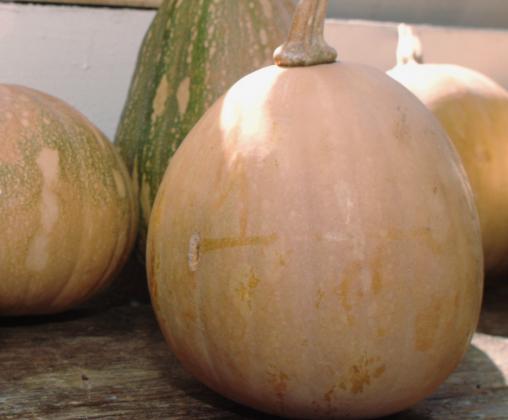Gardeners from northern States tell stories of growing enough zucchini to feed the neighborhood. It’s different in Florida.
Growing anything in the squash family can be an interesting exercise in pest I.D., as you discover the many molds, insects and viruses that infest your precious cucumbers or yellow squash. If you’ve been frustrated with trying to grow squash in Florida, try growing tropical squash, it won’t disappoint you.
Squash is a major vegetable crop for Florida farmers. Various Florida squashes are available in groceries and farmers’ markets winter-spring. Most of our domesticated squashes worldwide originated from Mexico and Central and South America, and have been cultivated by people for thousands of years.
Tropical squashes are adapted to growing in hot, humid climates, and are more resistant to diseases that affect many other types of squash. These pumpkin-type squashes have hard, thick rinds that help protect them from insects.
All of the tropical squashes listed below have different shapes and sizes, but all are in the same family (Cucurbita moschata). They have yellow or orange, sweet, smooth-textured flesh and all are delicious cooked in a variety of ways, including mashed or in soups and stewed dishes.
Calabaza: There are several varieties available; all produce large, green, smooth pumpkins. Calabaza is popular in Caribbean dishes like sancocho stew; it also makes a great pumpkin pie. Calabaza is available in local stores, but the next two are specialty squashes that you may need to grow yourself if you want to try them.
Seminole pumpkin: This small, tan-colored squash has been an important food of Native Americans in Florida for hundreds of years. It is now considered an endangered food because it isn’t commercially cultivated and may be in danger of disappearing entirely.
Pumpkin frybread is a popular Seminole recipe. Moranga squash: These adorable little pink pumpkins are popular in “shrimp-in-squash”, a traditional Brazilian dish.
Grow own
March is spring planting season for squash in Central Florida. I would recommend a minimum growing area of about 25 square feet in full sun for vining tropical squashes. Depending on the variety you select, you will start harvesting squash 2-3 months after planting. Harvest tropical squash when they are at mature size and their mature color.
If you want your squash to look like the seed packet, or you want to save seeds for the next year, only grow one variety at a time. Open-pollinated varieties like the three above, will cross-pollinate with each other and you’ll end up with hybrid squash.
Squash will grow well in compost, and should also be fertilized lightly every two weeks. Drip irrigation is best for squash because watering the leaves can encourage fungal disease.
Squash have male and female flowers on each plant and bees are needed to transfer the pollen from male flowers to female flowers. Protect pollinators by avoiding pesticide applications on or near blooming flowers.
Tropical squash will hold a few of weeks after harvest if they are placed in a cool, dry room.
To prepare tropical squash: Peeling is optional, as rinds are soft and edible when cooked (but not everyone likes the way they taste). If you peel them, use a Y-shaped vegetable peeler. Use a very sharp knife to cut the squash open. Cut in half (unless you are going to use the squash as a bowl, then just cut off the top). Scoop out the seeds and stringy parts in the middle with a spoon.
Cut the squash into chunks and it’s ready to use or freeze.
For gardening and farming information, seed sources, and classes, contact UF IFAS Extension-Osceola: http://sfyl.ifas.ufl.edu/osceola/ , 321-697-3000.
Jessica Sullivan is a sustainable agriculture & food systems agent with UF/IFAS Extension - Osceola County.




